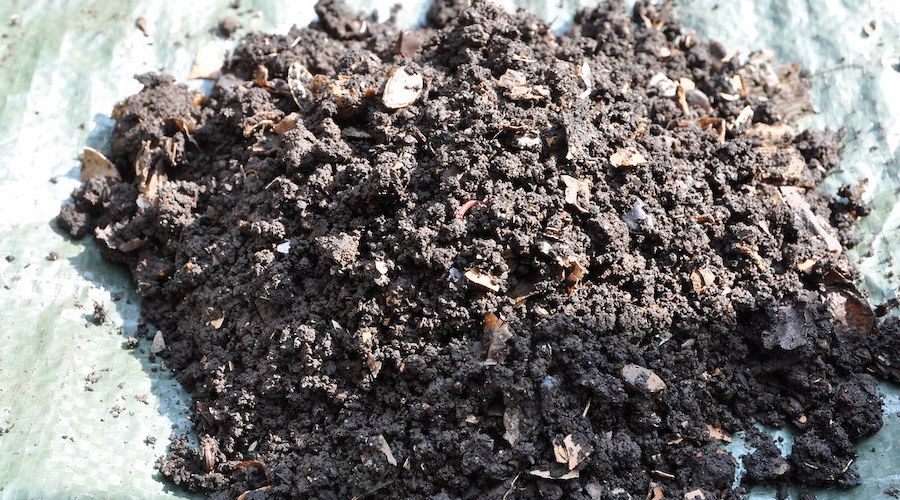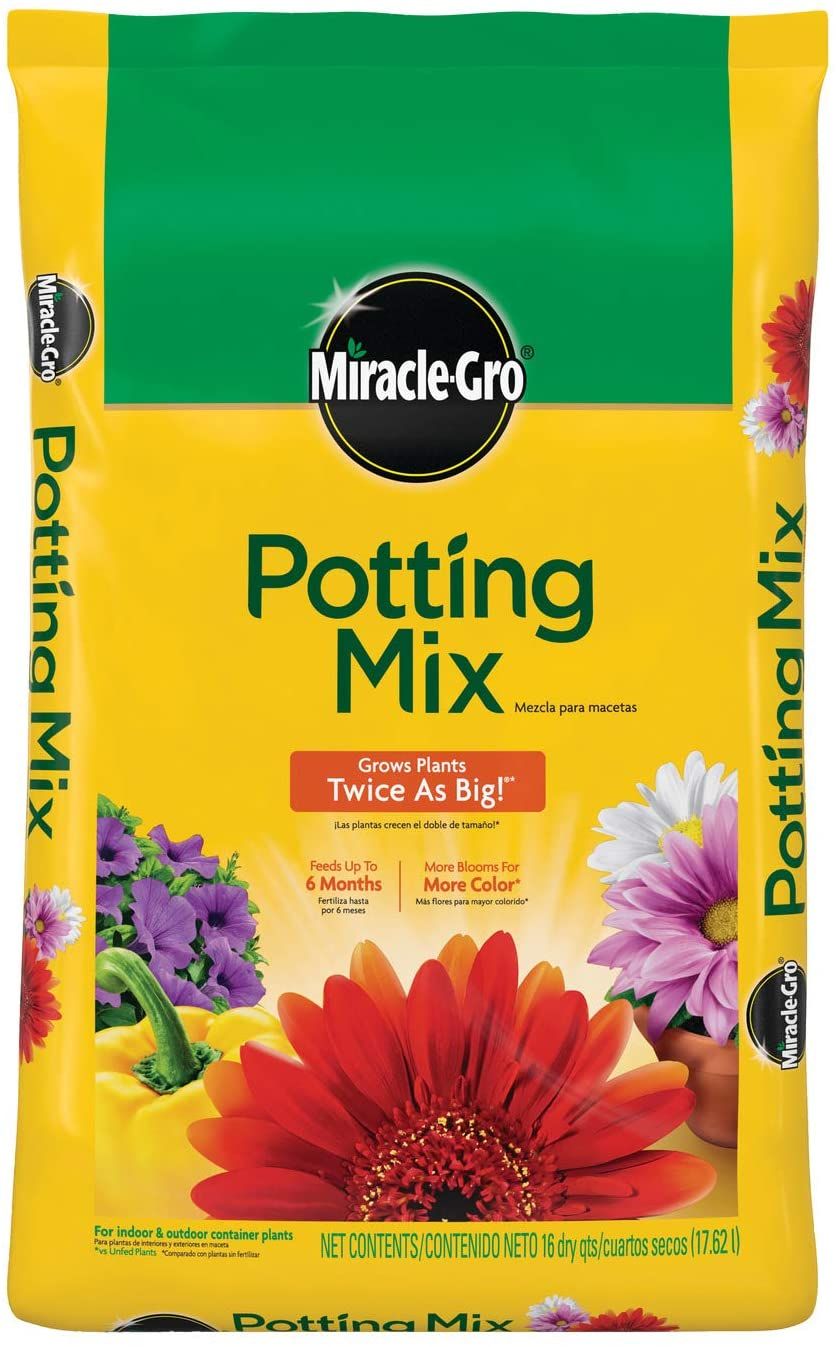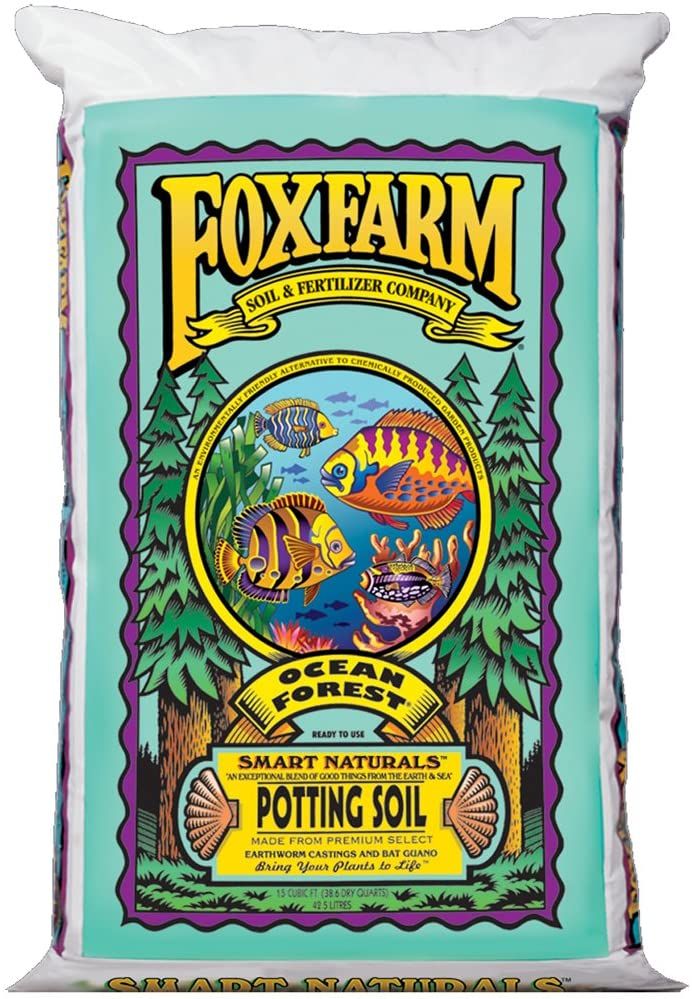There's a lot of confusion regarding potting mix vs soil, but by the end of this article, you'll know exactly what you need for your garden. Whether you are doing container or non-container gardening, you need to set up a suitable environment for your plants. You have to ensure that you have provided them with enough nutrients, otherwise, they won’t be able to develop properly. The most important part of the care for a plant is the growing medium, and depending on its type and requirements, you may need to plant it in either a potting mix or potting soil.
If you have asked yourself the difference between potting mix vs soil and wondered what you should use for your plants, you're not alone. However, there are some significant differences between the two, so when you make your choice, you always have to take into consideration the purpose. One major difference is that potting soil is essentially dirt and contains only minerals and organic matter, while potting mix has no soil but is rich in perlite, vermiculite, peat moss, and others. Moreover, potting mix is very light, whereas potting soil is heavy.
After this brief explanation, let's dig more into what's the difference between these two, and what are their pros and cons.
Potting Mix vs Soil: Which One’s Better?
Image credits: sacratomato_hr via Creative Commons
It is a common misconception that a potting mix and a potting soil are the same things. They have some significant differences both in their contents and their use.
Potting mixes tend to have a very light and fluffy texture and are often soilless. They provide a sterile environment for plants, which decreases the risk of diseases. Moreover, they contain things that help with aeration, drainage, and water retention.
Potting soil, on the other hand, is quite heavy and is unfortunately not sterile. However, if you want to go the eco-friendly way, you can find one that contains garden soil and sand. Potting soil tends to block airways and retain more water, which could result in plants suffocating or suffering from root rot.
So which one should you use? It depends. If you want to do non-container gardening, you should stick to potting soil. However, ensure that you choose the type of potting soil that is best suited to the specific needs of your plants. It tends to be quite dense, which hides the risk of it becoming water-soaked or water-logged, which can cause root rot. Moreover, you may need to add fertilizers to the soil to compensate for any missing nutrients.
If you plan on container gardening, you should use a potting mix no matter where you will grow your plants - inside or outside. Since potting mixes are light and fluffy, they will give enough space for roots to grow. When growing young plants, you must use a potting mix. Moreover, they are very good for both water drainage and retaining. Another positive of potting mixes is that plants are safe from diseases, weed seeds, and pests if soilless mixes are used.
Pros and Cons of Potting Mix
Image credits: livjam via Canva
1. It's soilless
Since the potting mix is soilless, it provides you with more control over everything. It is free of diseases and pests, and you can also add ingredients to control drainage, nutrition, airways, and water retention.
2. It’s sterile
As we mentioned earlier, the potting mix doesn’t contain soil, which makes it safe and sterile for plants. This means that you have a very low risk of pest, weed, and disease issues.
3. Contains ingredients to improve soil aeration
The potting mix usually contains peat moss, bark, coir, perlite, vermiculite, or pumice. These components improve aeration as well as water drainage and retention. Remember, plants love comfort as much as we do. Plants are happiest when the soil is light, fluffy, and less clumpy.
4. It may contain a slow-release fertilizer
This can be both a positive and a negative and is one of the reasons why you should be very careful when you choose whether to use potting mix or soil. While using moderate amounts of potting mix can give the needed boost to new plants, using larger amounts can have the opposite effect and cause more harm.
5. It’s lightweight
The biggest drawback of the potting mix is that it is very lightweight. This would cause issues in windy locations, where the top part of the soil would be easily blown away. This would mean that you would either need to get a container that would keep the soil in, or you will have to spend more money refilling the topsoil.
If this is your issue, a great way to prevent mini soil erosion is by placing decorative pebbles in the pot to prevent winds from sweeping away the mix. If you're dealing with larger pots and containers, you can't go wrong with adding a layer of mulch to keep the soil intact.
Backyard Boss Recommended Best Potting Mix
We did the research, so you don’t have to. After going over a bunch of different potting mixes, we determined that your best bet would be the Miracle-Gro potting mix.
The Miracle Gro potting mix is blended in order to be suitable for a wide range of container plants. It contains no bark or compost which makes it less prone to fungus gnats. The Miracle Gro has coconut coir in it which helps a lot with water retention. Last but not least, it can feed for up to 6 months, which makes it quite cheap.
- It is highly affordable, which makes it perfect for anyone who is on a budget.
- Due to its contents, it is less prone to gnats.
- User reviews reveal that this potting mix is very effective and they saw results as early as 2 weeks in.
- This potting mix is able to feed your plants for up to six months.
- Contains nitrogen extracted from synthetic ammonium.
- Not versatile
- Some users have reported a bad odor when using this potting mix.
|
|
Miracle-Gro contains nitrogen which is supposed to boost plant growth. However, it is extracted from synthetic ammonium. This results in the production of chemicals that can kill microbes and organisms that live in the soil. Unfortunately, this potting mix is unsuitable for all plants. You shouldn’t use it for plants that need less humidity. This mix contains materials that can hold large amounts of moisture, which can cause root rot in such plants.
Pros and Cons of Potting Soil
Image credits: BartCo via Canva
1. May or may not contain garden soil
Potting soil can easily be fully organic. It can contain pure garden soil. However, this varies from brand to brand, so you’ll have to read the label carefully to make sure of it. Garden soil is extremely nutritious for plants and holds water more than potting mixes. This makes watering your plants less frequent.
2. Not sterile, can contain fungus and disease
Unlike potting mix, potting soil is not sterile. It can contain fungi or disease pathogens. Moreover, it may contain weed seeds as well. It can also contain residue from last season's pesticide and chemicals if it isn't flushed well.
3. Contains organic matter
Unlike a potting mix, which usually needs to be enriched with organic matter, dirt is naturally rich in it. Thus, it easily provides all plants with the nutrients they require. When it comes to the plant world, this is a one-size-fits-all theory.
4. Contains compost
Since potting soil contains compost, this means that it doesn’t lack microorganisms, mineral elements, and humus. This helps the structure of the soil ecosystem, which in turn affects plant growth positively over time.
5. Heavier than potting mix
Unfortunately, potting soil is not ideal for container gardening. A good medium for it has to be light and fluffy, otherwise, the air movement and root growth would be restricted. Because of its weight and density, it is less than ideal for seed starting. This can be remedied, though, by adding pine bark, organic compost, or composted leaves to improve aeration.
6. Can be refreshed
When it's time to pack up your garden during the winters, instead of throwing away the potting soil, why not re-use it? Old potting soil can be refreshed, which makes this an eco-friendly and budget-friendly option. Although there are a few things to keep in mind, it is possible, and here's a detailed guide to help you learn how to refresh old potting soil.
Backyard Boss Recommended Best Potting Soil
We determined that if you are looking for the best potting soil out there in terms of price and quality, you should look no further than FoxFarm Ocean Forest FX14000 -1.5 Cubic Foot Organic Potting Soil.
The FoxFarm potting soil is made out of earthworm manure, fish remains, crab meal, and bat guano, combined with compost humus, sand, and peat moss. It is lighter and fluffier than most other potting soils. Moreover, it is completely organic and contains no nitrogen.
- It is the best potting soil you can get for container plants.
- Its texture is quite light, which makes drainage, water retention, and airflow much easier.
- It contains a high amount of nutrients and minerals due to its unique contents.
- Its main ingredient is earthworm castings, which are very beneficial for plants.
- It is fairly expensive, but it is still worth it for the price.
- It isn’t available everywhere, so you might have to order it online.
- Some users have shared that it is too “hot” for some seedlings.
|
|
Frequently Asked Questions
1. Is potting mix enough to grow healthy plants?
For containers, pots, and planters, potting mix is enough to grow healthy plants. You can use potting soil in containers, pots, and planters only after reducing the heaviness it comes with by adding pine bark, compost, or perlite. You will need to add fertilizer to the soil before putting it in containers and pots for a less messy affair.
2. Can I swap potting mix for potting soil?
Remember, while both come with their own set of pros and cons, potting soil and potting mix are not interchangeable. Your plants will suffer if they're grown in soil and suddenly moved to potting mixes or vice versa.
3. Should fertilizer be added to a potting mix?
Yes! But first, make sure that the potting mix doesn't come mixed with fertilizer. You can make homemade fertilizer for free to keep your garden happy!
4. Can soil be sterilized?
Yes, soil can be sterilized. Sterilization can reduce fungi and bacteria, weeds, and nematodes present in the soil. Soil sterilization is usually done when the temperatures are hot, and the process can take anywhere between four to eight weeks to complete.
To Sum It Up
So there you have it! There’s no definite answer to which one is better, simply because they have completely different usages. If you plan on container gardening, you should use a potting mix, whereas if you plan on non-container gardening, you should go for the potting soil. If you are looking for the best potting mix out there, you should look at the Miracle-Gro potting mix. It is quite cheap, very effective, and less prone to gnats than most other brands. If you need to get the best potting soil, look no further than the FoxFarm Ocean Forest. It has an overwhelming amount of positive reviews and is one of the most popular brands for non-container gardeners!
Happy Gardening!






